A record of my visit to Nagoya University and Tokyo in September 2006. Some business and some sight seeing. All in all we found Tokyo and Nagoya very accessible. Arigato!
I went to Nagoya University in Japan for two days of meetings. I travelled through Tokyo and met two student there who graduated in 2000, John Wood and Paul Salisbury. I took lots of pictures but mistakenly formatted the card after the Nagoya visit and deleted a great many pictures, about 150, including all those from the University. The purpose of the visit to Nagoya was to talk about quality assurance and enhancement in teaching in a university that thinks of itself first and foremost as a research university, and only secondly as a teaching university. The trip was a week, Monday to Monday. Kate came along for the sight seeing while I toiled. We flew with Qantas Business Class and our expectations – low ones – were meant. At least there was leg and elbow room.
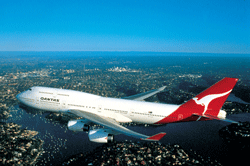
But the seats are not the wonders of engineering that they are on Singapore Airlines, nor do they recline as much. QF21 for Tokyo left Sydney at about 10 pm and once aloft it took forever for dinner to be served. Kate ordered something but after three hours of waiting she passed out (not exactly sleeping) but I was very hungry and waited. Yes, three hours into the flight the meal came, so it was a 1:00 am dinner on Sydney time. This and many other incidents made me think the slow service was deliberate a way to save. We paid for Kate’s dinner but she did not eat it so that is a savings for Qantas. The entertainment system was also primitive and I did not use it.
We landed at Narita airport at 6 am local time but we had to wait and hour for the next bus to the Shibuya area.
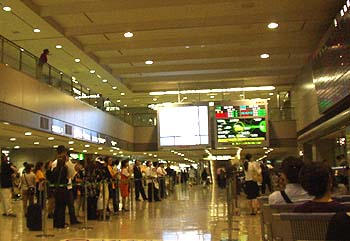
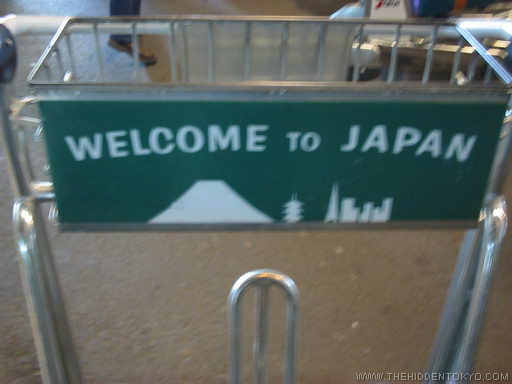
They are called limousine buses but there is nothing special about them. We exchanged the coupons we had for tickets and got the number of the stop and waited. The lining up was very orderly. When the time came the checking and loading of bags was efficient and effective and off we went for the ninety minute ride into Tokyo. The first forty minutes were through woodland but soon enough the outskirts appeared and they looked like any modern city.
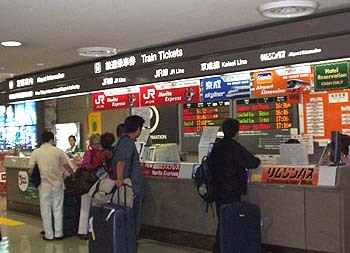
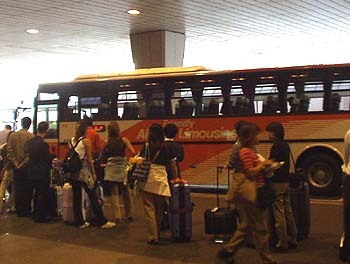
We got to the Tokyo hotel, the Excel in Shibuya about 9 am but no room was available so we checked the bags there and went walk-about. It was over 30 degrees centigrade and very humid. We got hot and sweaty in no time at all. This is the Wikipedia link for Shibuya http://en.wikipedia.org/wiki/Shibuya
Here is the hotel.
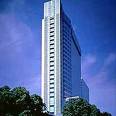
We were on level 14. This picture makes it appear alone but in fact it is in a forest of other tall buildings which must have been airbrushed out of this picture. When we hit the street in Shibuya this is what we saw.
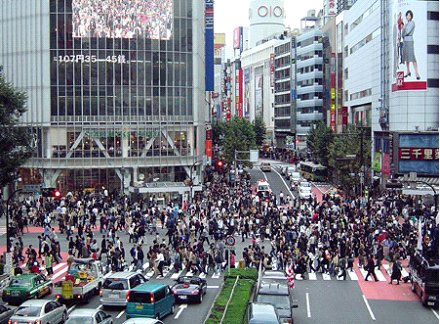
About 1,500 pedestrians cross the roads here every time the light changes. In the glass building to the left is a Starbucks where we eventually had coffee on the way back to the hotel. We had set out for the Tobacco and Salt Museum which we navigated to a few blocks from the hotel but as it was Tuesday it was closed. (This is a pet phrase of ours which we learned driving out England in 2004. Whatever day we went to something turned out to be the one day a week or year that it was closed.) The Tobacco and Salt Museum is always closed on Monday and when public holiday falls on Monday it is closed the following Tuesday. And Monday had been a public holiday, respect for the elderly day. We got back to the hotel and waited in the lobby, reading, and our room was ready soon enough. We showered and I contacted Paul Salisbury and John Wood,  and we set up a rendezvous when we got back from Nagoya. Whoa! Why did we go to Starbucks and not something All Nippon? Because nothing else was open that early in the morning and we were starving thanks to the completely inadequate breakfast on Qantas, though little did we know it was a better breakfast (hot food) landing in Tokyo after nine hours of sitting than it would be returning to Sydney where there was no hot food. In both cases the toast had an archaeological texture to it, as though it had been dug from the ruins of Pompeii.
and we set up a rendezvous when we got back from Nagoya. Whoa! Why did we go to Starbucks and not something All Nippon? Because nothing else was open that early in the morning and we were starving thanks to the completely inadequate breakfast on Qantas, though little did we know it was a better breakfast (hot food) landing in Tokyo after nine hours of sitting than it would be returning to Sydney where there was no hot food. In both cases the toast had an archaeological texture to it, as though it had been dug from the ruins of Pompeii.
Later we set out to see Shibuya by night. But by 7.30 pm we were asleep in bed. But Shibuya never sleeps.
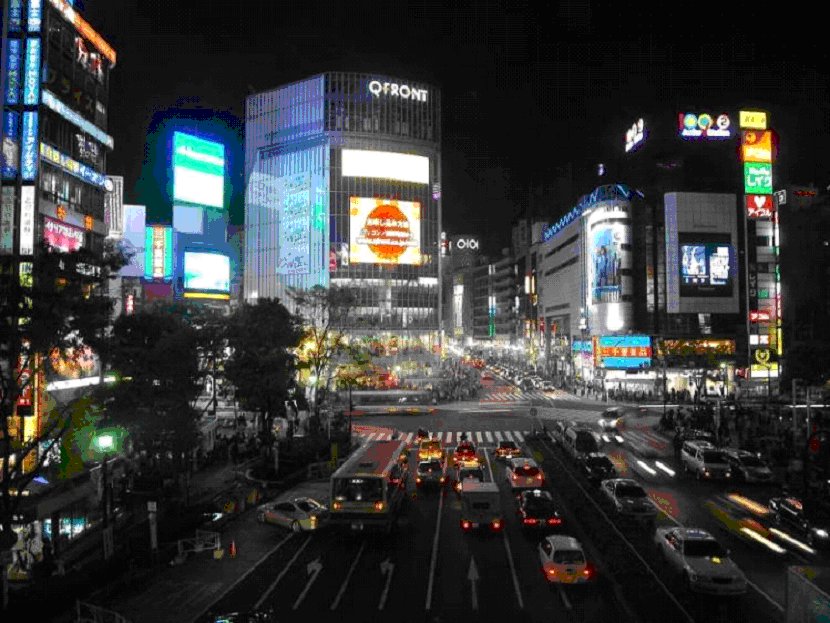
The next day was an early start to get from Shibuya to Tokyo Station (one of the biggest) and to find the bullet train for Nagoya.
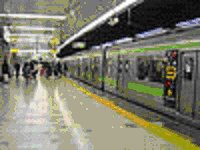
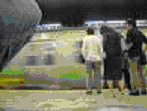
This lime green line took us straight from Shibuya to Tokyo station. We were on the train about 7 am and it was not crowded. Although we were going into the center of the city the train was nearly empty when we got to Tokyo station. We tried putting money into a ticket machine to no avail until a passer-by told us in good English that it was out of order. That explains why no one else was using it! We switched to another machine which gave us an English option which we used to buy the metro ticket. There are many private companies operating trains and the stations are concatenated onto each other. There is nothing zen about them. In the stations we used there was no main hall a there is in France, Germany, Belgium, Netherlands, or England with a list of train and platforms. We struggled to find the right platform each time through a warren of turnstiles and local corridors. When Kate asked officials for help they tried and usually succeeded in pointing us in the right direction and often showing us the platform number to find.
We found the Shinkansen (new line train) train for Nagoya and found it clean and comfortable with enough room for luggage. We left the big roller in check at the hotel and took Little Blue (the bag I have taken around the world many time since 2000) and the Mercedes Bag (so called because it is made from left over leather from seats of Mercedes cars) which I have had since 1990 and it has been around the world even more often than Little Blue (which retains security marks and stamps from Paris, Berlin, New York, Singapore, Bangkok, and Toronto).
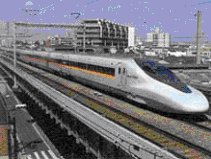
The ride was ninety minutes and smooth. We got to Nagoya station and quickly found signs directing us to the Marriott. Again we were early for a room but there was letter from my host and someone came to collect us for lunch, Nami, at 11 am, so we waited in the lobby for less than an hour. Since we were early Nami had the cabdriver take us the long way around Nagoya Castle, which Kate later went through, climbing the many steps to the top. I took lots of pictures but lost them when the formatting occurred.
We arrived at Nagoya Station.
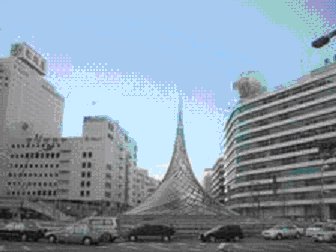
and went upstairs to the Marriott Associa.
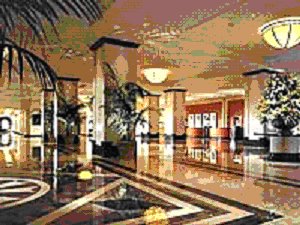
We stayed at the Marriott Associa for one night and thought it was the best hotel room ever. Almost sumptuous and very quiet.
While Kate explored the castle 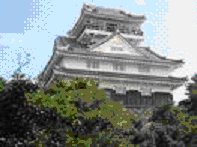 I had meetings from 1 – 6 pm followed by a stand up buffet dinner until 8 pm and then a 45 minute cab ride back to the hotel for zonking. Up the next morning for an 8.15 pick up and more meetings, and the public lecture on QEA until 3:30 pm when it was time to go. Here is a shot of Nagoya University.
I had meetings from 1 – 6 pm followed by a stand up buffet dinner until 8 pm and then a 45 minute cab ride back to the hotel for zonking. Up the next morning for an 8.15 pick up and more meetings, and the public lecture on QEA until 3:30 pm when it was time to go. Here is a shot of Nagoya University. 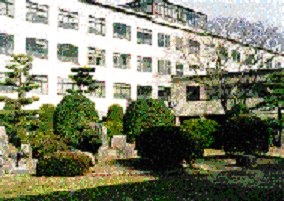
I was surprised to see weeds here and there, but as with Tokyo the concern with appearance seems to be focused inside and in formal gardens. Elsewhere neglect rules. My hosts were pleased that sixty people came to my lecture. I had a meeting with two interpreters before hand who had marked up the PowerPoint presentation and they asked me to explain the technical terms. I was impressed by how thorough they were in preparation and how speedily they got the point when I explained which I attributed to their quick wits not to my succinct explanations. The talk went well and there was lively question and answer session. Overall on teaching development I would say Nagoya is about where Sydney was in 1983; the year workshops of teaching development were first offered at Sydney. They are being offered for the first time at Nagoya in September 2006. Given the commitment of Nagoya University I would expect it to progress faster than Sydney did.
At 3:30 I got into a cab and went back to the hotel to meet Great Kate and the bags and walk downstairs to the train. We again had trouble finding the right platform but we managed (Kate asked a guard because I cannot ask for directions; it’s a guy thing), and in time our train came and off we went I did get a picture of Mount Fuji on the way by.
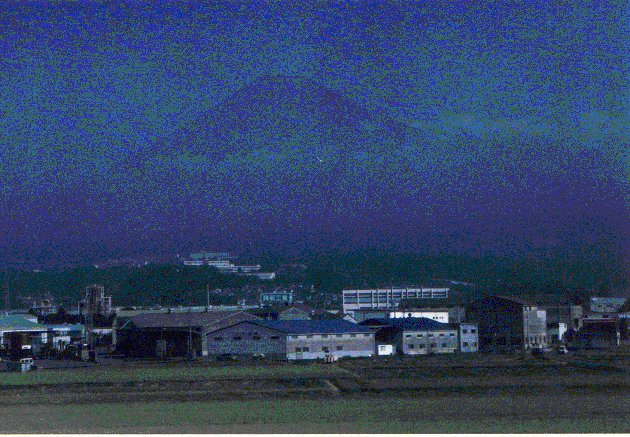
The only pictorial evidence that I was in Nagoya is this, me in a typical pose, snapped by Kate on her analogue camera.
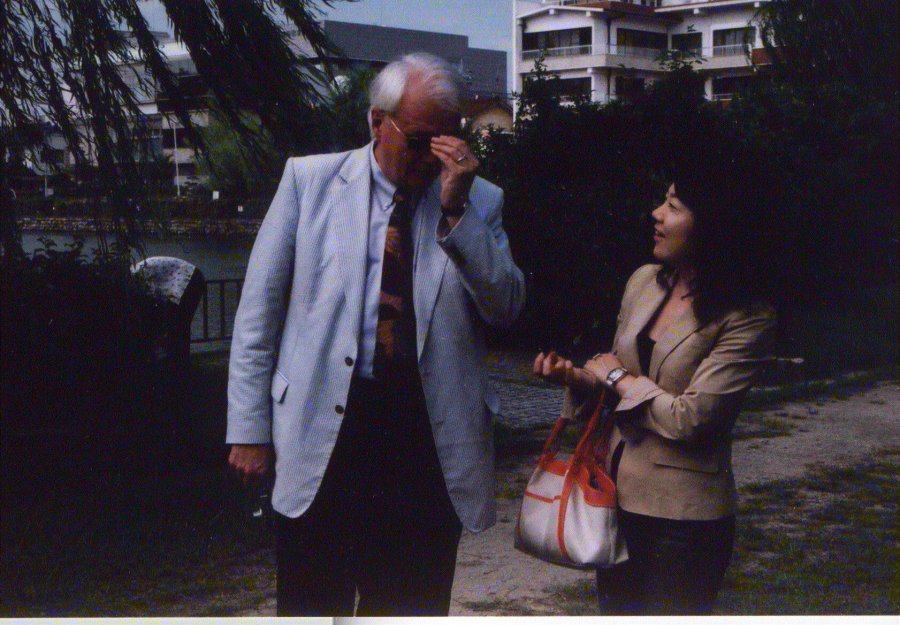
We got back to Tokyo Station changed to the local for Shibuya and back to the Excel Hotel. We stowed the bags and hit the streets for some eats. We went into a basement place with no English menu and no picture menu and Kate asked for “meat” and after the waitress consulted another someone came from the kitchen and said “chicken” which we ate tempura style. Paul and John came to the hotel the next night and we went to a noted restaurant by taxi with Paul doing the Japanese.
With their advice we had a great meal and learned how they find living in Japan. Paul works at the Strine embassy and John is corporate consultant. John had some intense stories about riding the subway at peak hours – how hard it is to breath in packed cars for an hour ride. (He moved house to get a shorter commute on a line that was not so jammed.) We also mapped out the weekend to include the first session of a puppet show, the Tokyo City Museum, and Sumo! They explained something of the rituals of sumo which John follows with interest. But alas we could get no tickets that the late hour, partly because a new leader had stepped into the governing party and become prime minister and the ritual is for the PM to appear at the last day of the competition and since he was new, it was packed. This is as close as we got to sumo:

I found the puppet show other worldly. The opening tableau with the ivory faced puppets about half life size, each accompanied by three spectral masters concealed in black drapes (think all over black Ku Klux Klan robes) seemed a metaphor for our lives. Each of us is surrounded by the shades of those who have gone before us. During the performance the puppet masters shed some of the masking and at time the emotion of the drama has three levels – the narrating song (one of which was remarkable, the villain), the puppets, and the puppet masters whose faces when revealed express the same emotions as the puppets and the song. We watched the first of three two-hour segments. It is Wagnerian in length as well as drama. Photographs were not allowed and this is the best of the few I could find on the web
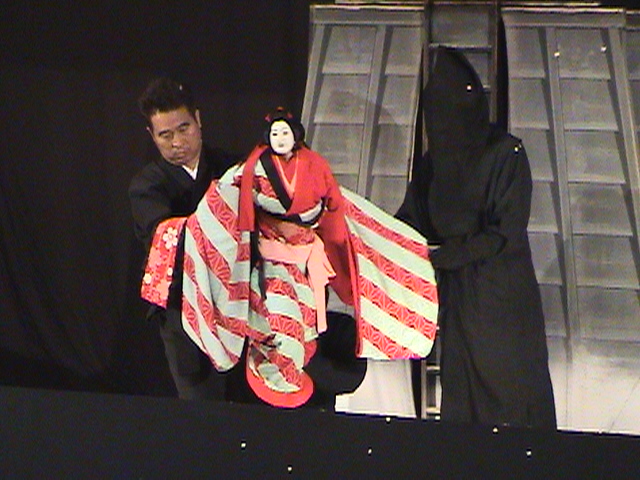
We went to the National Museum earlier and found it serene with spare displays that one could contemplate and take-in (unlike my experiences with the Metropolitan Museum in New York which has on display everything it has, so every room is a jumble without focus).
One of the reasons Shibuya seemed a good choice was the famous statue of a dog to be found there. Since we are dog people we thought that a good sign.
This is the famous dog Hachiko on Wikipedia http://en.wikipedia.org/wiki/Hachiko
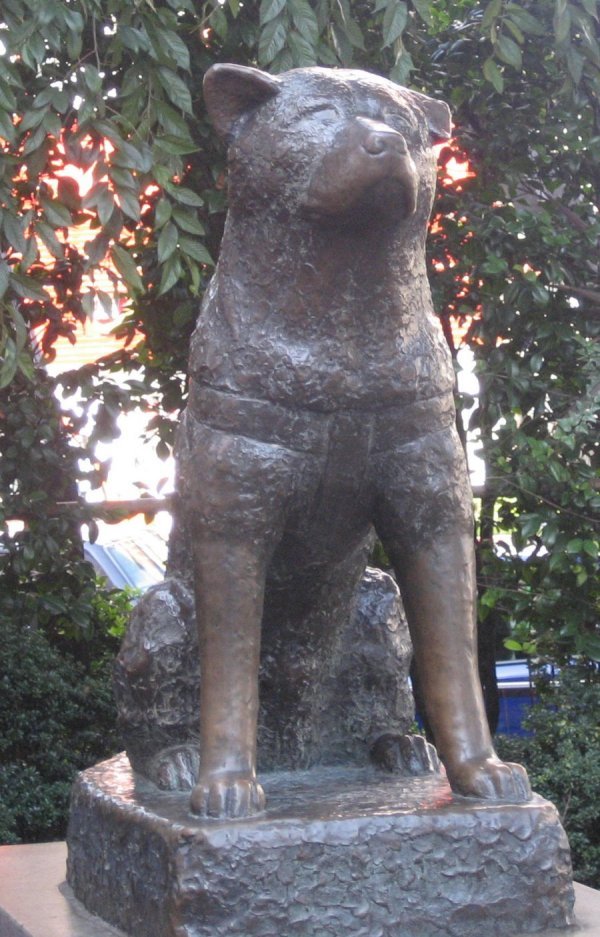
This Hachiko a dog that waited every day for his master to return to Shibuya station long after his master had died. We found Shibuya Station to be the Tardis. We used everyday twice a day and yet I am sure we did not use the same entrance or exit twice, despite our efforts to do so. Every time we exited it was different, like the Tardis travelling through time and space never knowing where it is.
Nearby were these tumblers.
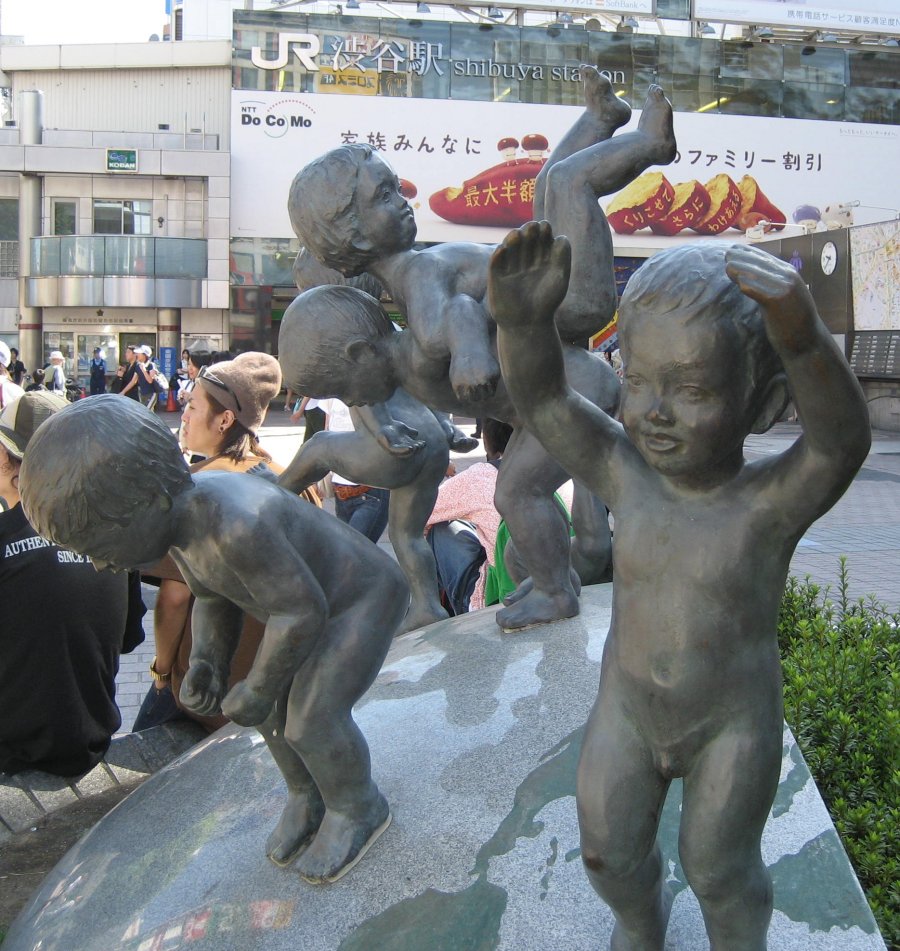
We did two temples in Tokyo and got templed out.
The Meiji Temple near the hotel.

And Akasua at the end of the train line through Ueno.
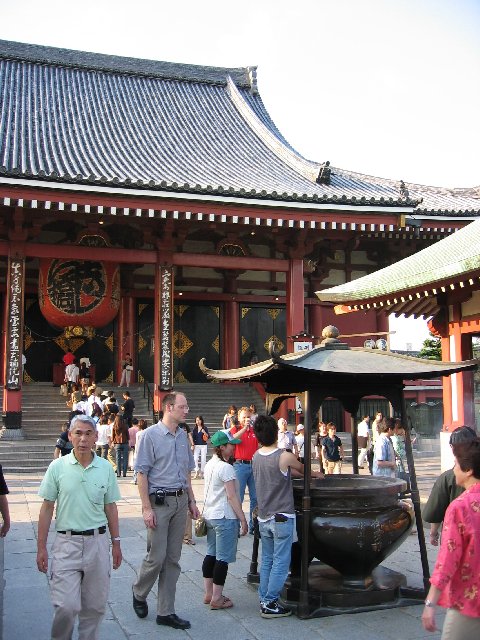
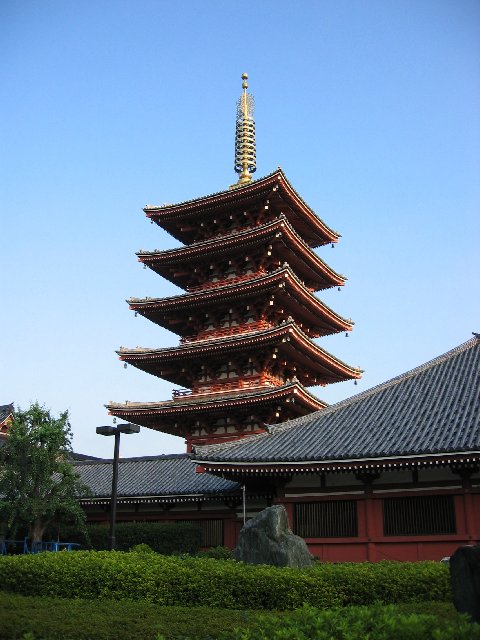
We then reverted to type and made for our temples, those of mammon and commerce, Tokyu department stores where we patrolled the food floors and ate sushi and sashimi. We also drove the wheels of the Japanese economy with shopping for this and that. Neckties for me and gifts for others is always out standard excuse for such bourgeois pursuits.
I just loved the perfection of the displays that put Galerie Lafayette and Harrod’s to shame, and even surpass KdeV in Berlin which I had not thought possible.
Consider the melons. 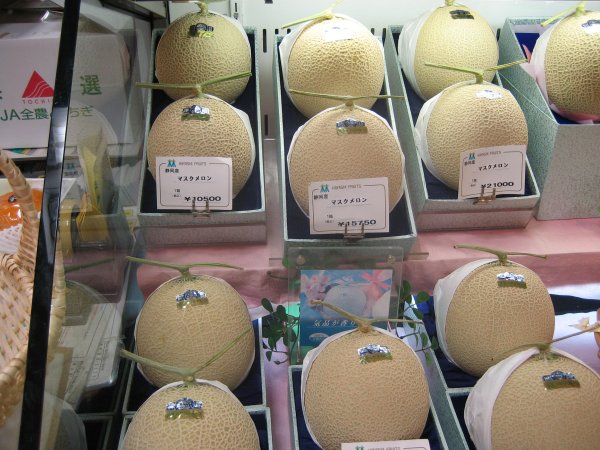
Or the Waygu beef in folds. 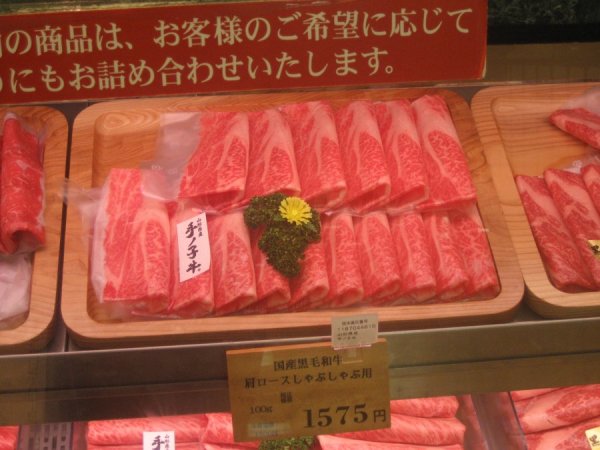
All the more impressive was that every Tokyu Department Store had such an extensive and impressive food floor and there were two within ten minutes of the hotel, as did every other large department store like Seibu and Yamashata. A food paradise, until you notice the prices. The wafer thin slices of Waygu beef go for about $AUD 20 for one hundred grams or 3.5 ounces. If I was buying for us two I usually think about 150 grams each. Do the multiplication to see the implication.
And plenty of fish often sold with the roe in one piece. 
We tried two foods from a local shop. One looked like a purple whitlof but was fiberous and tough. Not the salad vegetable we had hoped for. The second was also purple. It is the unidentifed purple object shown here. First whole (though we sliced it before thinking to take the picture so a white seam shows. Then divided into half.
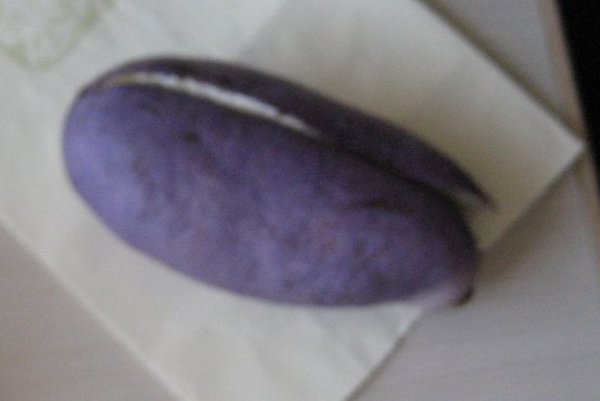
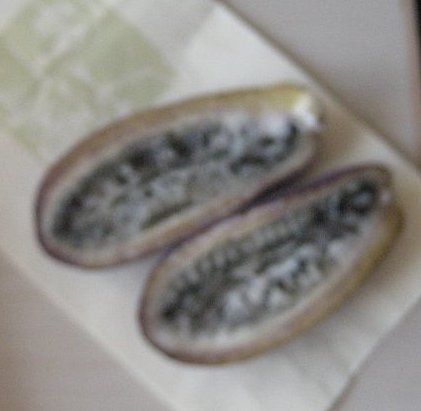
I tried one bottle of Japanese rose-ay wine with a French label that was OK. (I saw American and Australian wines with French labels as well). So I tried this one, a second. Yuk again.
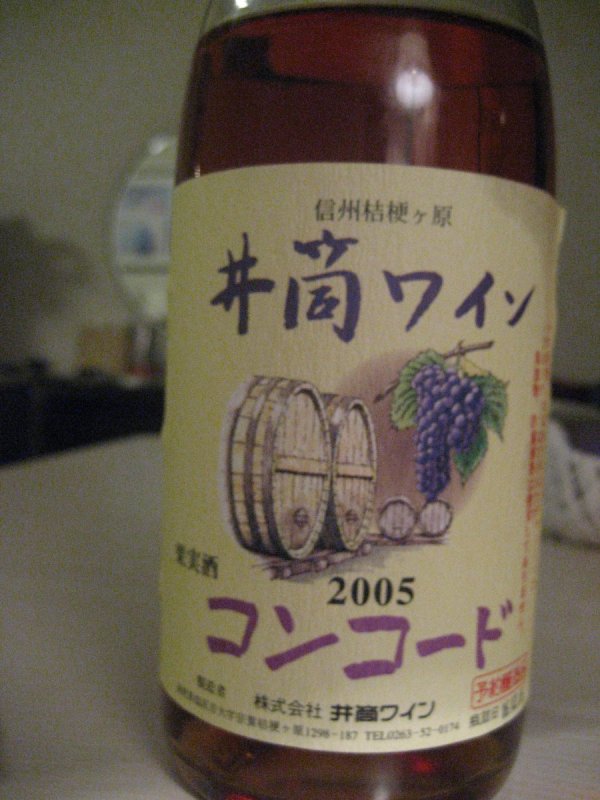
Despite all the food, we saw no sign of the Iron Chefs from Food_TV. Too bad. We tried to eat local, and plunged into basement restaurants more than once to point at what someone else was eating to order. However, we also packed Brisk Brew and gave it a work out for morning and afternoon coffee. I like green tea with food but coffee it is not. Needless to say the Brisk Brew was filled with the One True Coffee – Illy.
Since I spent two months in Seoul, South Korea in 2004, Paul asked me how Tokyo and Seoul compare. Tokyo is much cleaner and visibly more prosperous. Shibuya Crossing by night compares to Dongdaemon Stadium where I stayed for two months with the surge of young people every night and the waves of commuters every day. The military is very visible in Seoul and invisible in Tokyo, although some police did have weapons but we saw very few police. Comparable subways but maybe more English signs in Seoul and stations in Seoul have large central halls that make navigating easier. Of course, one also sees many more Americans in Seoul around the army bases and there is the dedicated US Army television channel that seems always to have World Wide Wrestling on. In Seoul getting off the subway was always a struggle at peak hour because people pushed in without waiting for those leaving the train to exit. In Tokyo this exchange is far more orderly. There are lines painted on the floor to show where to stand and public address announcements telling you to wait for passengers to get off the train before getting on. We also noticed signs and bilingual public address announcements in the subway cars to turn off the mobile phone, and people did not use them for calls – quite unlike Seoul (or Hong Kong) – did email and games.
Everywhere I go, I see Thucydides, even at Shibuya Crossing. (My piece on Thucydides is scheduled for the Antioch Review’s winter edition this December. It is a must read. http://review.antioch.edu/issue.php?status=upcoming )
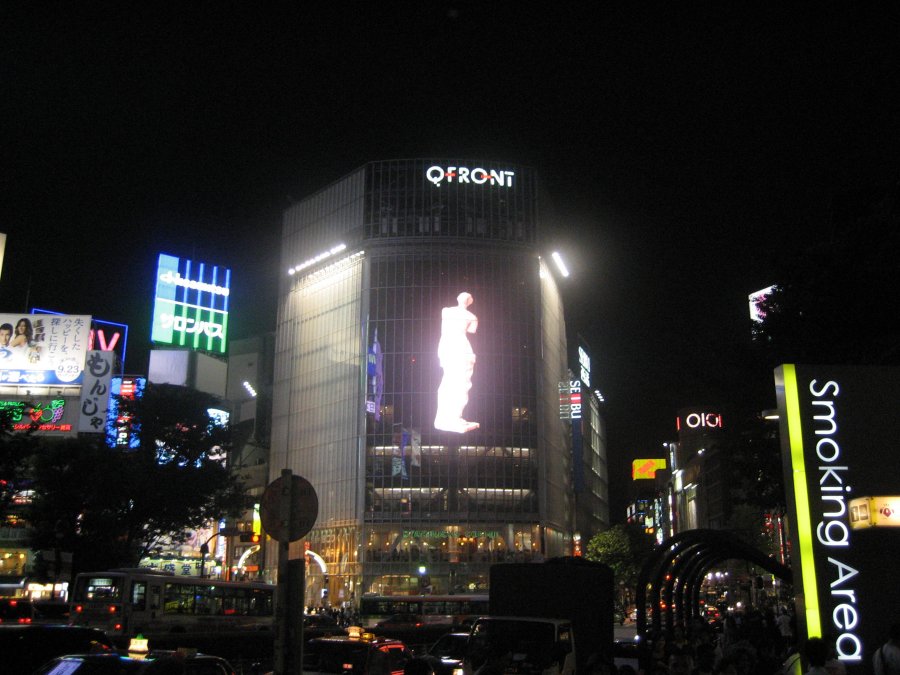
It is a televised image of the Venus di Milo (on display in the Lourve in Paris, and much larger than you might think). “Milo” is Latin for the island of Melos where, well before this Latin work of art was found, Athenians were corrupt beyond redemption.
All in all, I was very glad of the opportunity to visit Nagoya University and Tokyo. I have followed up on the items I said I would follow up on from Nagoya. Kate enjoyed tramping around Nagoya and climbing all those stairs to the top of the castle. We both loved Tokyo and found it more accessible than I anticipated, despite the assurances of experienced Tokyo visitors like Rod Tiffen. Having John and Paul to show us around and make suggestions was a bonus. It meant we did things we might not have done, like the puppet theatre and milling around the sumo stadium. It also meant we did things more efficiently like finding the dedicated subway line direct to Tokyo Station rather than the circuitous route we had otherwise settled on. We hope to see them both in Sydney sometime.
Happily, the return trip was uneventful. We checked the bags for the airport bus at 3:30 pm and piled on when it arrived. Ninety minutes later we were at Narita Terminal Two and checking in with Qantas. We eventually found the Business Class lounge – no hot food, in fact, the only food was nuts. We waited for 8 pm flight, growing increasingly hungry. Finally got on board and the meal service this time was quicker. I ate the meat since in Japan the default every time is fish and vegetable. I think I slept for once since time passed and when I stirred it was light and time for the pathetic breakfast of Pompeii toast! As soon as got home, it was time to go out for some real eats!
My part of the time was paid for out of consultancy funds I earned by doing extra work off-load and Kate’s was private. No taxpayers contributed to this trip except us.

Michael, reading your account of your trip to Japan makes me want to go back there. The fantastically complex train stations (and associated efficient train system) are modern wonders. And then, of course, there’s the food, the neons, the department stores, the temples and the random closure of public places (for Shelly and I it was the Tsukiji Fish Markets that were randomly closed on the day we chose to go and the Kabuki, which was only on for the first 15 days of the month – or was it the second 15 days?).
I think your blog is great initiative and look forward to reading more of it.
michael
Michael,
Thanks for the kind words. We did go to Ginza but I did not get around to writing about it. It was great, though. The explosion of neon has to be seen to be believed. But I think Subuaya throbbed with more human energy. The road was closed to traffic, and husband chairs were arrayed around umbrella tables in them middle of the road. I sat and did an International Herald Tribune puzzle while Kate did what she did. Civilized. ‘Husband chairs’ are those placed near where women want to shop, so they part their partners. That otherwise nonpareil department store in Seoul Lotte had no husband chairs and as a result Katie, who feels guilty, sometimes about keeping me waiting, did not spend nearly as much there as she wanted to do.
More later.
Michael Jackson
Qantas is one of the world most recoignized airlines. Singapore airlines maybe good on some of their routes however there are many let-downs. If you were so dissapointed then i suggest a small detour via Mumbai; Air India is much better I am sure. Just because the A380 has been introduced does not mean that it is being used on every leg.